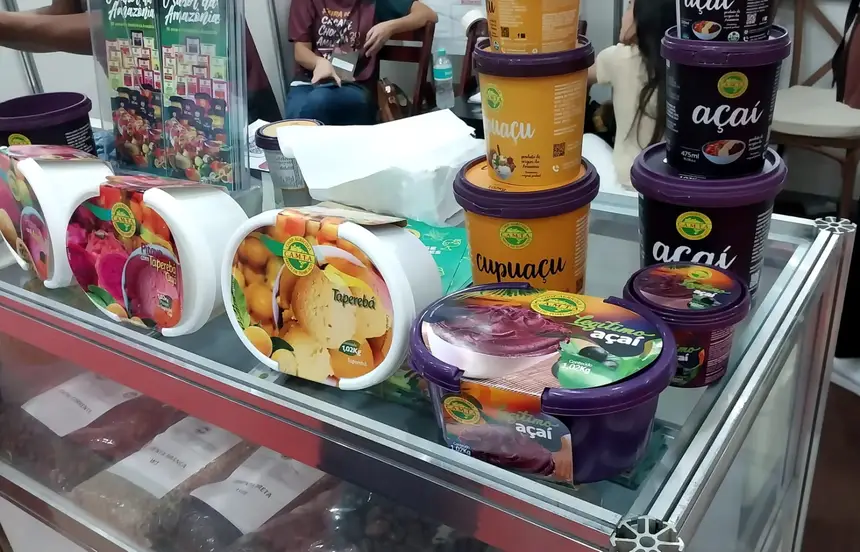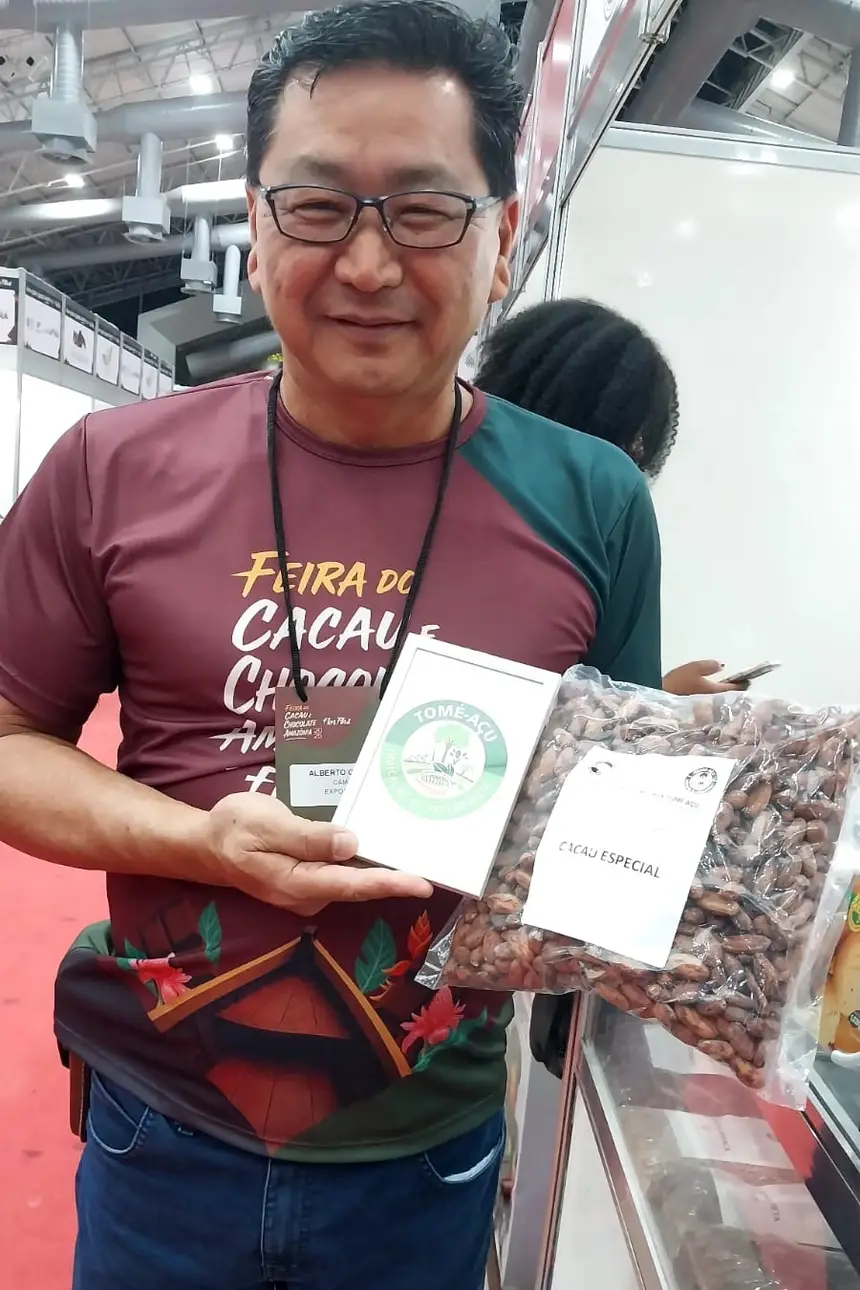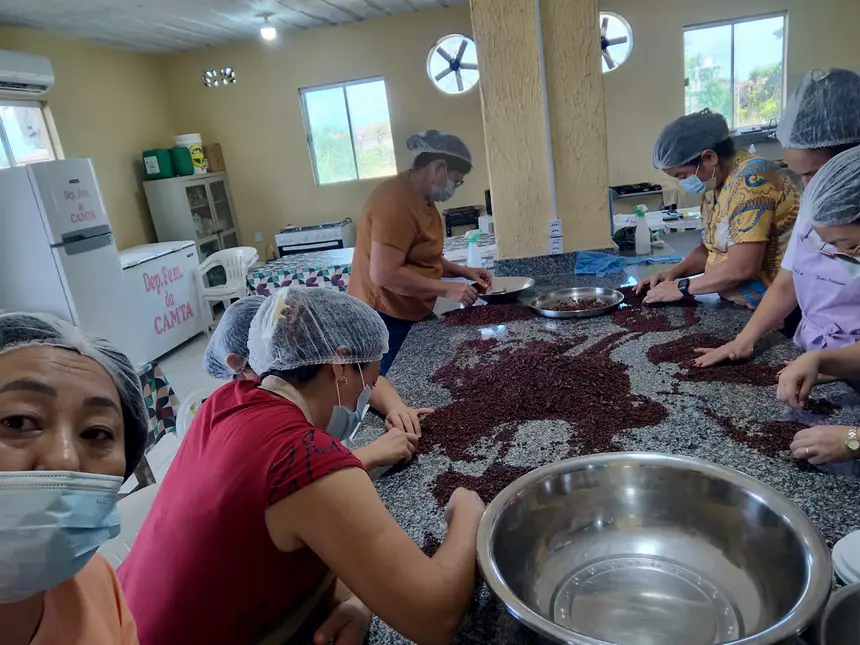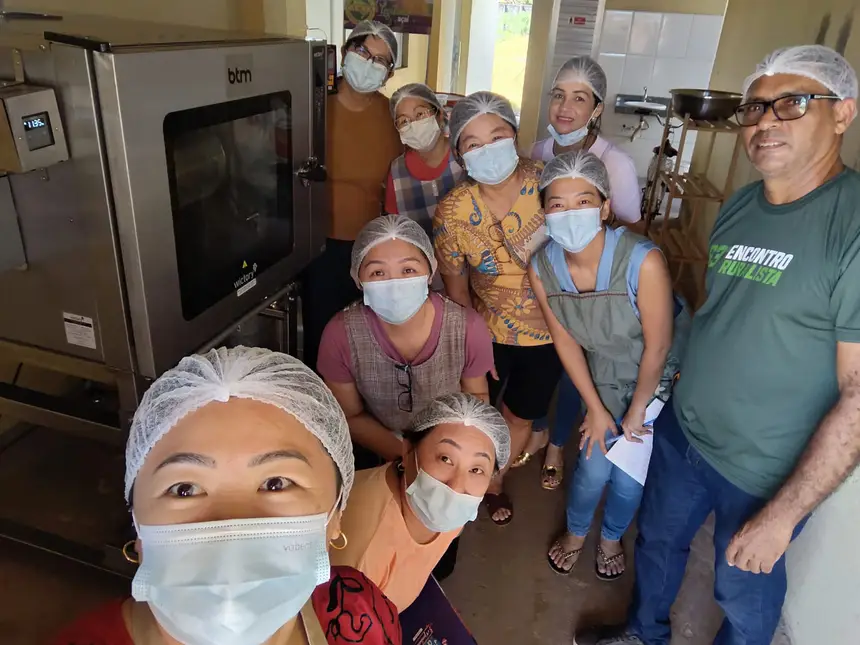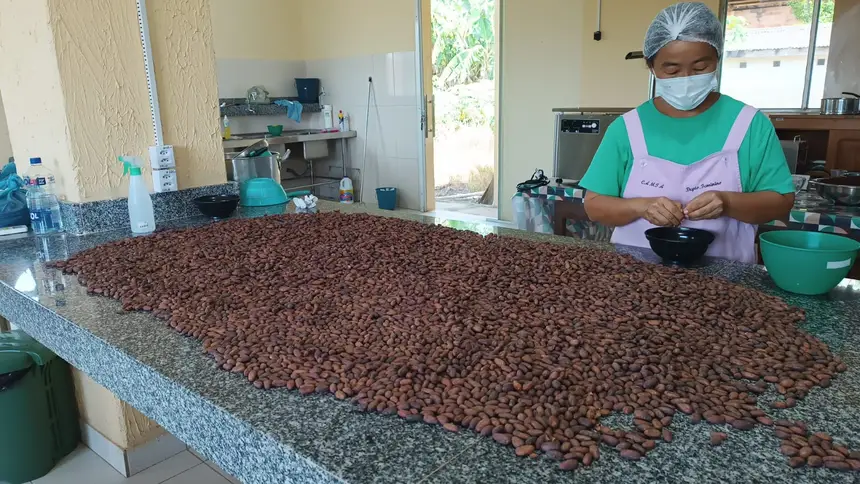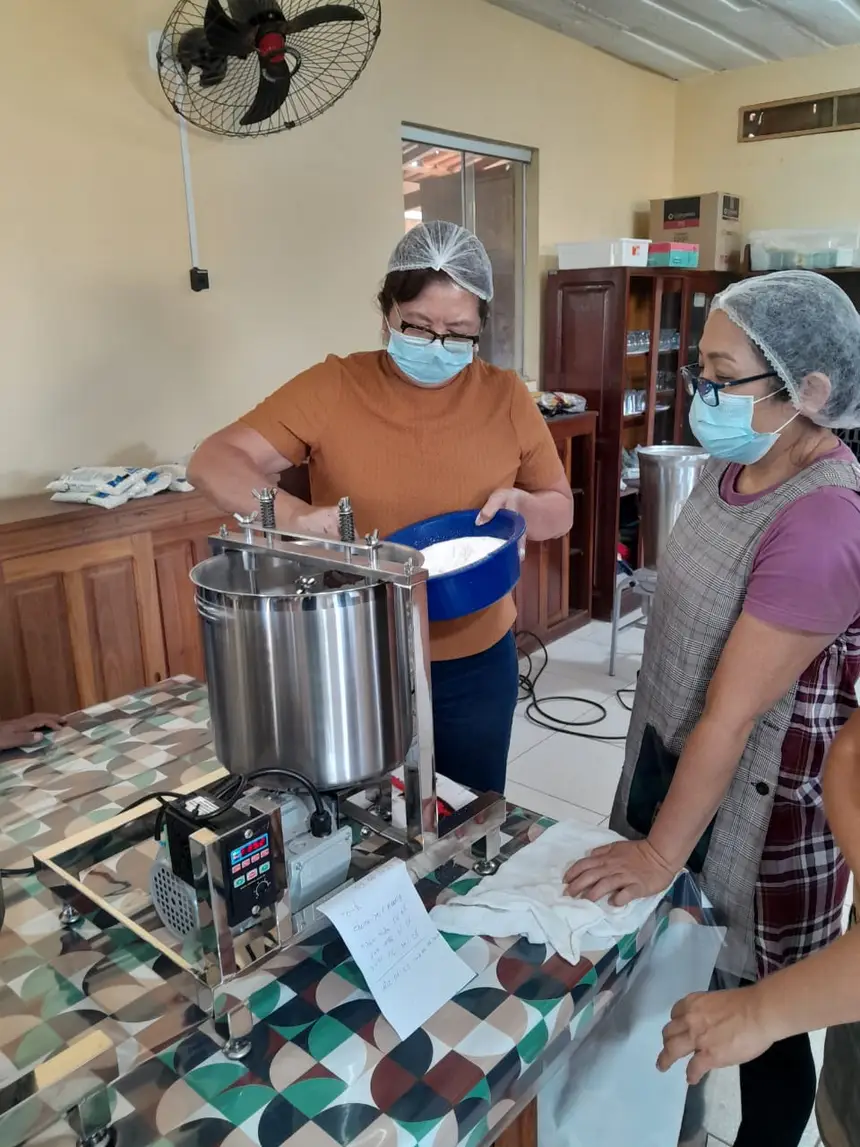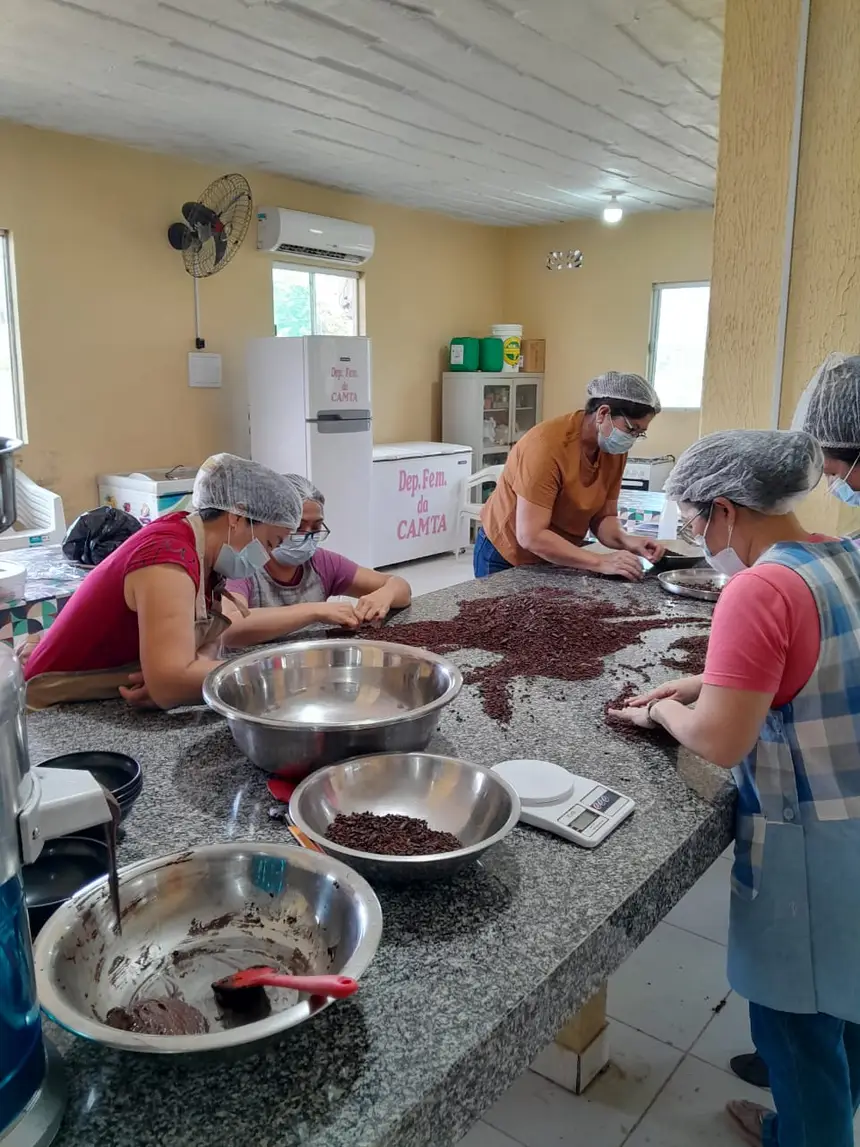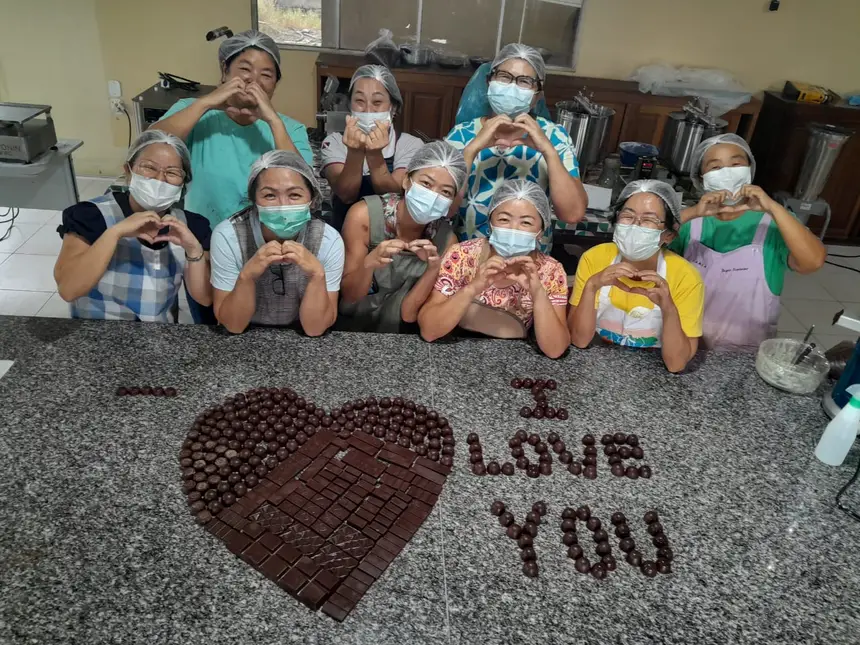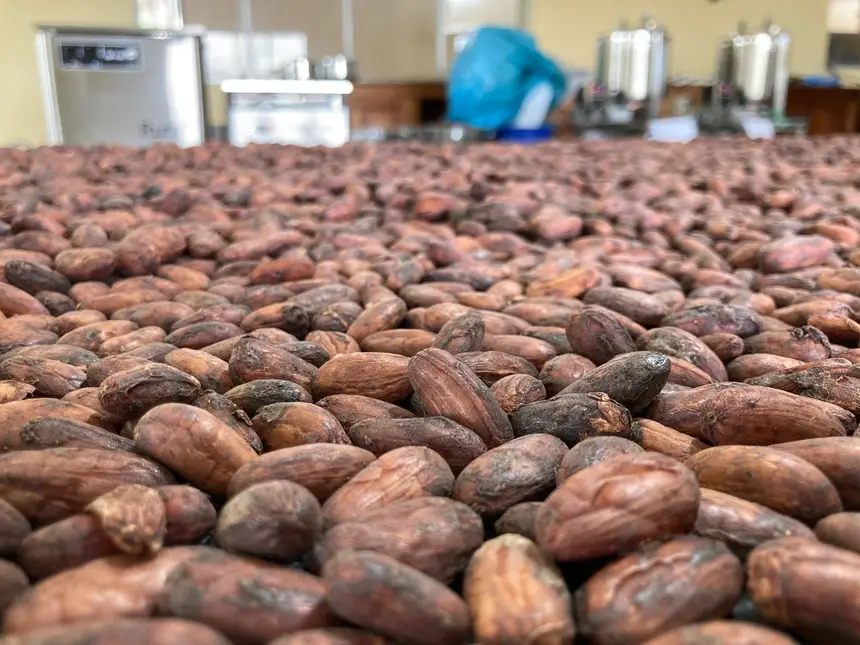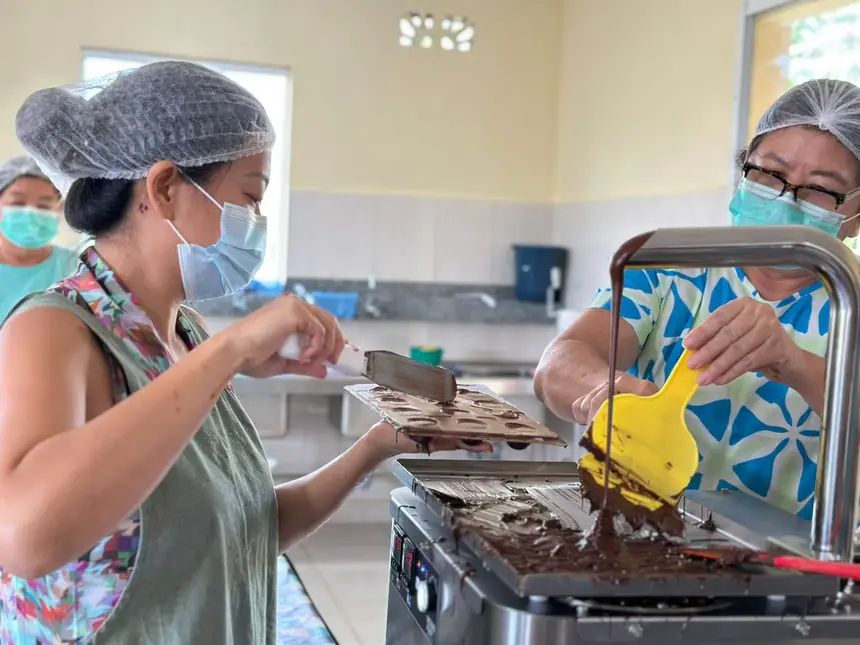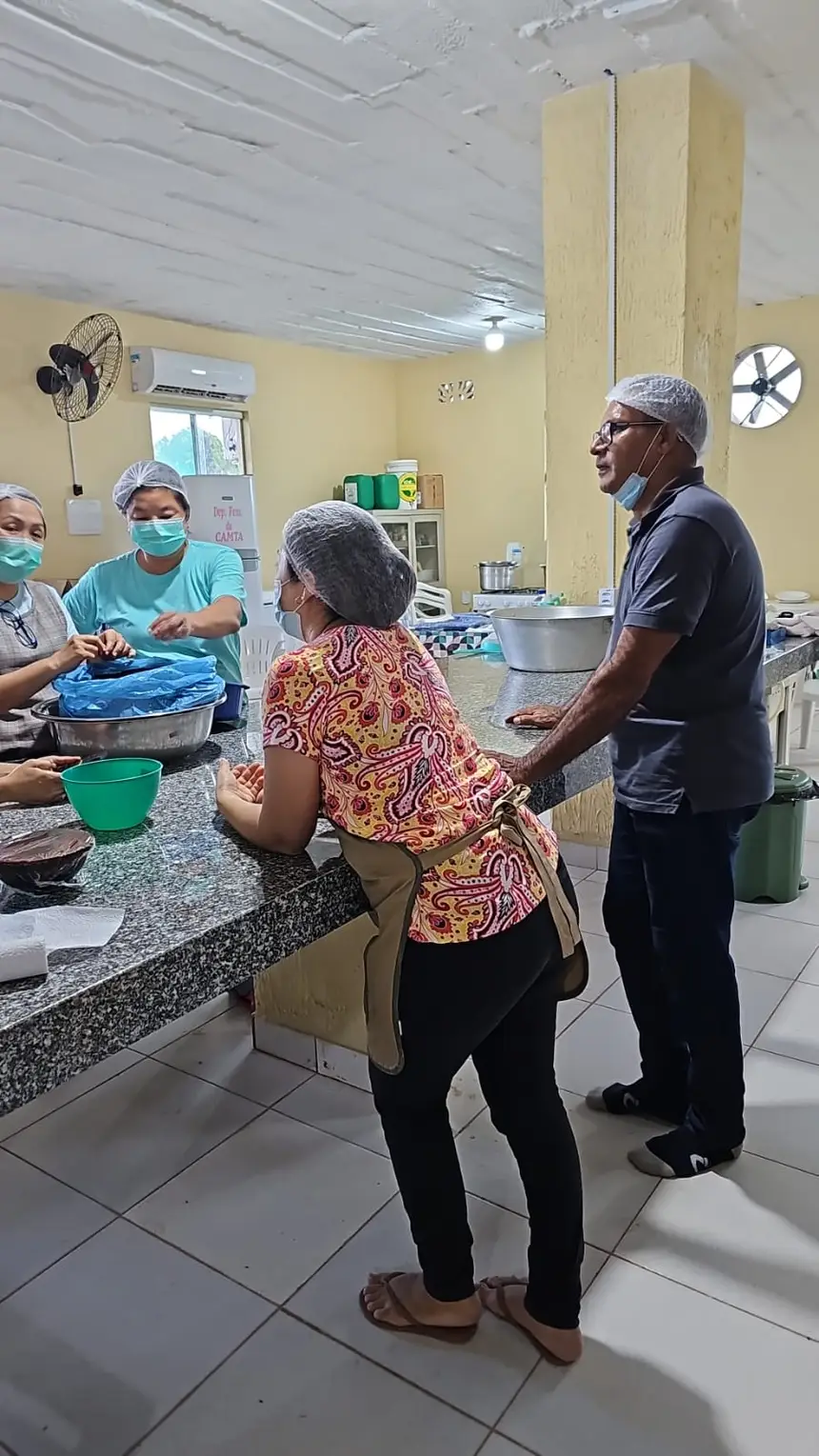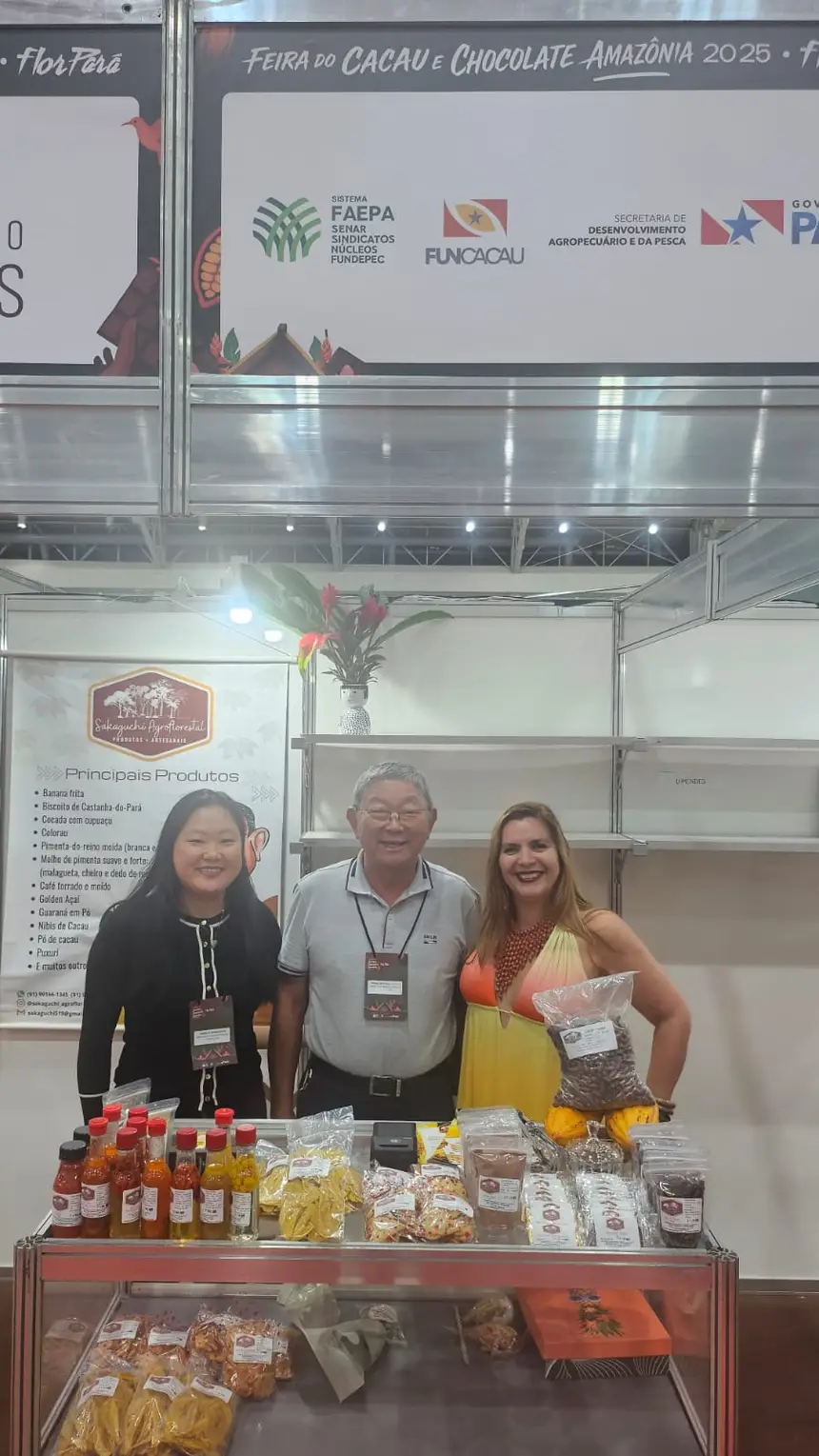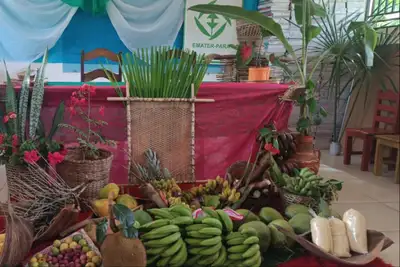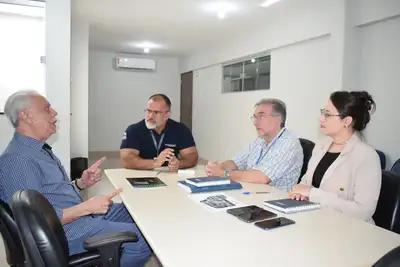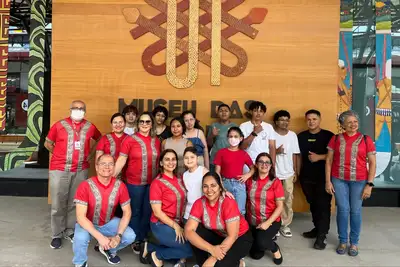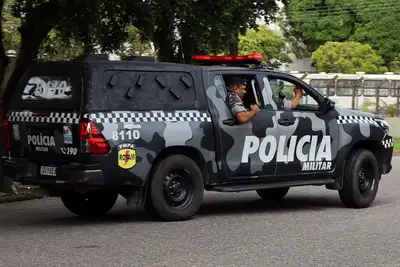Tomé-Açu will launch almond-derived products with Geographical Indication next semester
The municipality obtained the first GI of Pará in the Indication of Origin modality with the support of the State Government, through Sedap, which monitors the developments of this achievement
Holder of the first Geographical Indication (GI) of the state recognized by the National Institute of Industrial Property (INPI), in the form of Indication of Origin (IP), the cocoa almond from the municipality of Tomé-Açu, in the Integration Region of the Rio Capim, is preparing for the launch, in the second semester, of by-products that will already come with the inscription on the label so that the consumer can identify the achievement obtained in 2019. This Friday (13), the course held by the National Rural Learning Service (Senar) concluded, which guides 17 local students in the production of these derivatives.
With the support of the Secretary of Agricultural Development and Fisheries (Sedap), to which the Program for Incentive to Geographical Indication and Collective Brands of the State of Pará (GI and Brands Pará Program) is linked by law, Tomé-Açu receives stimulus actions so that the results of the GI achievement are harvested. Sedap's support occurred both for the recognition and continues in the post, with monitoring and strengthening of the entire chain.
The Cultural and Promotion Association of Tomé-Açu (ACTA) is the holder of the registration, responsible for maintaining a regulatory council that must preserve, promote, and protect the registered products, their quality and origin, as explained. The association is chaired by Francisco Sakaguchi, who participated last week, in Belém, along with other representatives of Tomé-Açu, in the Cocoa and Chocolate Fair, held at Hangar.
During the event, the representatives of Tomé-Açu presented at their stands the distinctive sign of the Geographical Indication. One of the representatives of the group, Alberto Opatta, who is president of the Mixed Agricultural Cooperative of Tomé-Açu (Camta), said that at the moment the group is working to establish the name "Tomé-Açu/Indication of Origin" on almond and processed (nibs) products for export.
"To help the producer improve prices and also to gain the market that wants to have this traceability with the GI of the type Indication of Origin in our case; we brought the product to the festival for the customer to see that in Tomé-Açu we have the GI," said Opatta.
The products with the GI, as explained by Opatta, in addition to cocoa almonds, include by-products such as nibs, chocolates, or cocoa liquor (a mixture of cocoa butter with cocoa powder, used in chocolate making). The course held by Senar aimed precisely to train 17 producers for the production of these by-products.
"The goal is to produce these by-products now, all of them with the distinctive sign of the Geographical Indication, from Safta (Agroforestry System of Tomé-Açu), and from Somos COP," he explained. He added that the entire line of certain products, such as ice creams, will feature the almond recognized with the GI and will come with these differentiations.
The instructor responsible for the course, Francisco Adailton da Silva, who is also a cocoa producer in Medicilândia (Integration Region of Xingu) and chocolatier, explained that the course included chocolate making, bonbons, truffles, and some cocoa derivatives. The course has a total of 40 hours, he informed.
During the training, participants used a butter extractor and pre-grinding to be used with cocoa nibs.
"For sure it is one of the best products in the region of the State of Pará. From what I worked with the cocoa from the Niponic family, so far it has been the best cocoa I have encountered in this region," he assured.
Support- Agronomist Márcia Tagore reiterated the support of the State Government, through Sedap, and recalled that the process of achieving the GI had the partnership with the Service for Support to Micro and Small Enterprises of Pará (Sebrae), through the transfer by the secretary, of resources for the execution of 10 activities, including the holding of seminars and technical visits, meetings, and exchanges, with the trip of producers from Tomé-Açu to Ilhéus, with resources from Sedap's Procacau.
"During the process carried out with the support of Sebrae, ACTA and Camta were also at the forefront. ACTA is the requester of the GI process in Tomé-Açu, with the involvement of local producers and partners," Tagore emphasized.
Other institutions such as Ceplac (Executive Commission of the Cocoa Crop Plan) and Emater also integrate the regulatory council of the GI and monitor alongside other local institutions.
"We also carried out the traceability process. We hired a company to provide training and discuss with them how this process could be. Today, ACTA continues the activity."
According to the agronomist, Sedap is discussing with the representatives of Tomé-Açu, new projects to be presented to the management council of the Fund for Support to Cocoa Cultivation of Pará (Funcacau) to continue support and strengthen the chain.
"To carry out a publicity work in the municipality and surroundings and mainly, to work on the organization of the council in monitoring, continue with the traceability action and think about marketing work and exposure at international fairs," enumerated the agronomist from Sedap.


